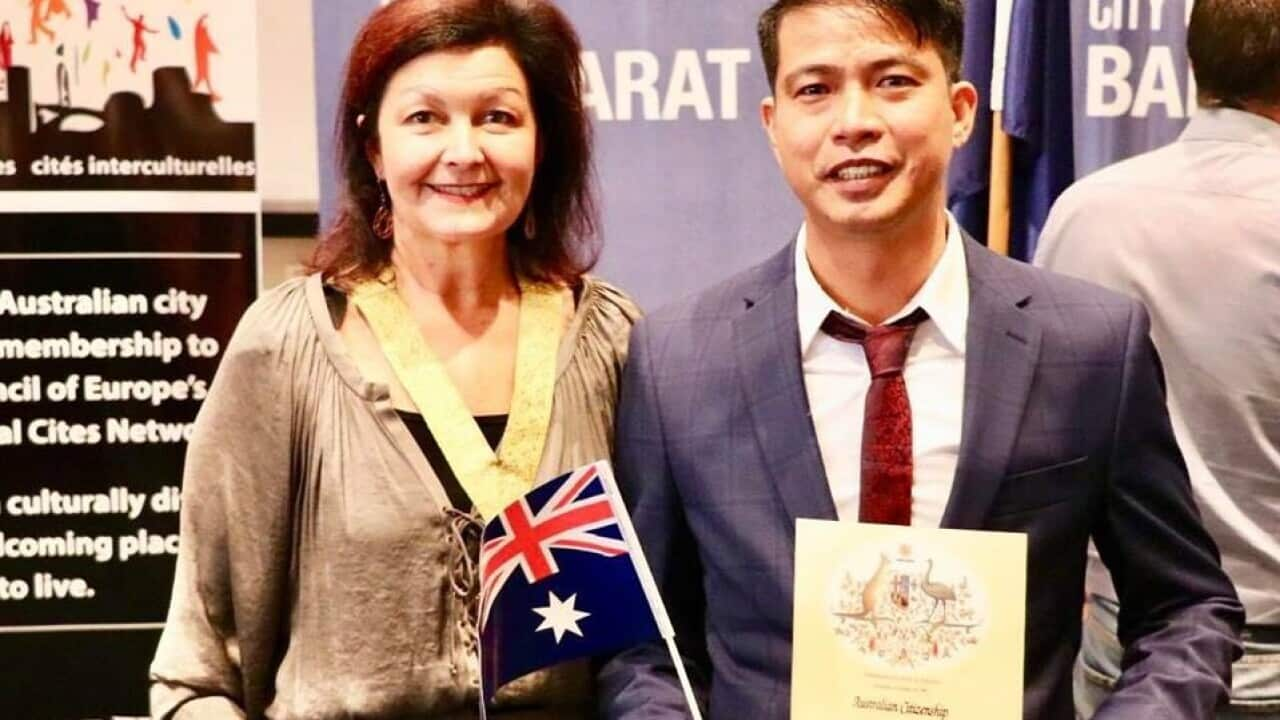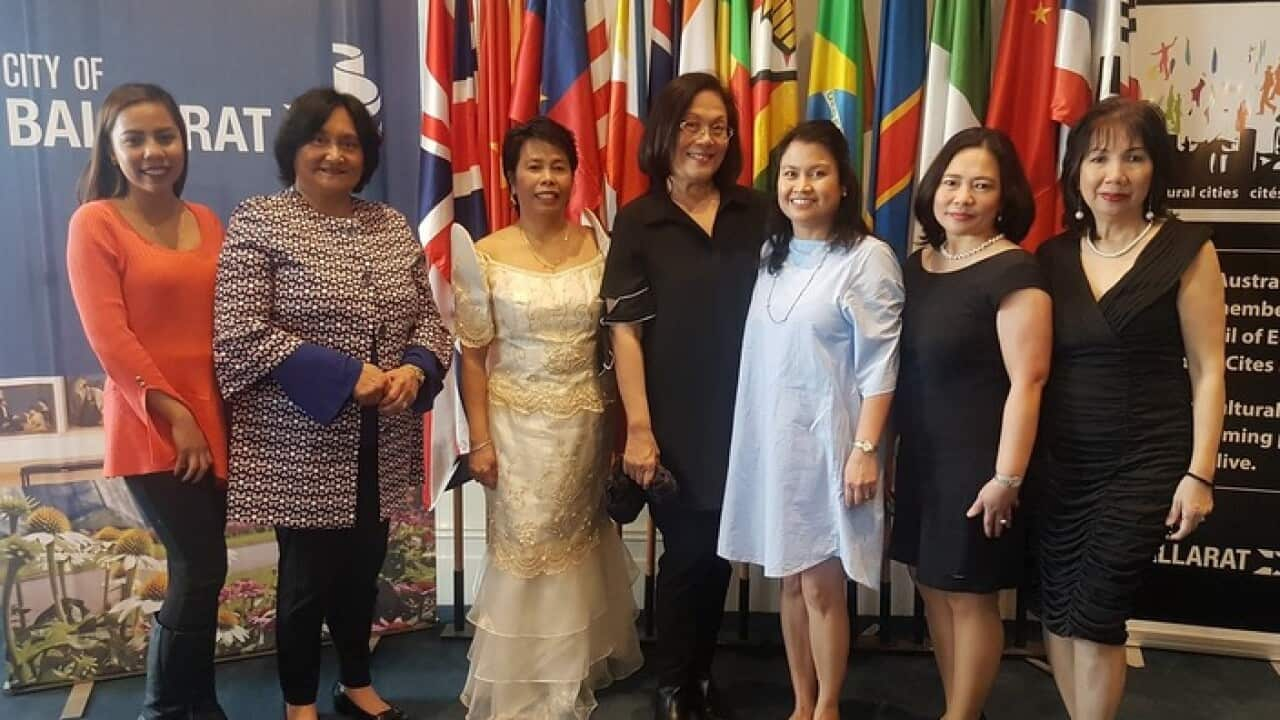An old mining town. A haven for artistic expression. A heritage city of vintage opulence and ornate architecture.
While these are some of the images attached to Ballarat, this regional town means a lot more to its Filipino migrant-residents than its Victorian reputation - it's home.
Expanding horizons
"Ballarat has been good to me."
When Rose Boquida decided to move from Balmoral to Ballarat in 1994, she admits that the relocation wasn't intentional. She was thinking of moving to Hoppers Crossing, but because of chance and circumstance, an agent convinced her to choose the "very cold" regional town instead.
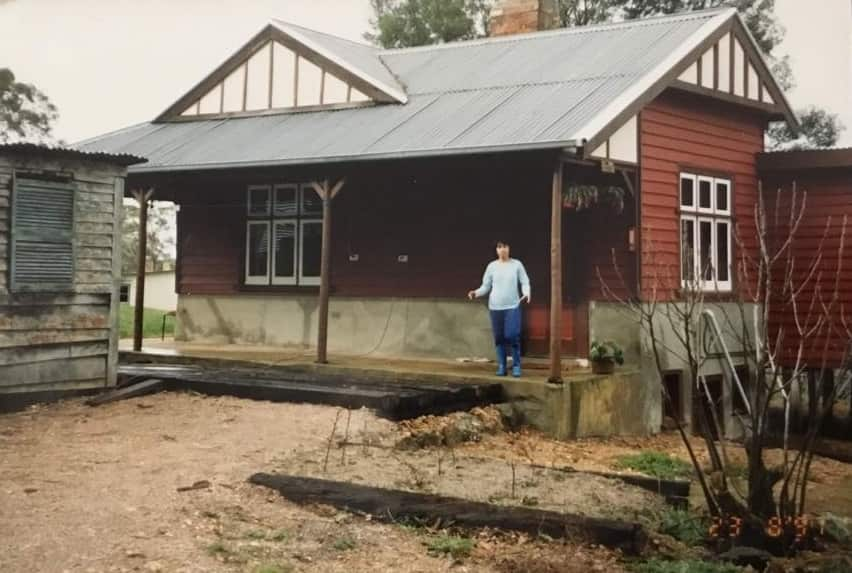
Rose Boquida's first house at Balmoral when she migrated to Australia in 1991 Source: supplied by Rose Boquida
"It was a better life than the one I had [in the Philippines and as a domestic helper for the President's son in Singapore], but it was depressing. I didn't have anyone to talk to. There were only kangaroos on the street," she shares.
The street also brought about a chance encounter with a stranger who tried to make her feel inferior because of her skin colour. She refers to this discriminatory interaction as "a sad thing".
But while the incident could have tainted her image of the town she now calls home, Rose shares that most of the interactions and relationships she has had in Ballarat have proven to her that for every racially-charged snipe, there are a thousand more welcoming hellos and a thousand more opportunities for migrants willing to adapt.

Source: Supplied by R Boquida
"Because of my partner [who is a builder], I was able to go into property building. The first house he built was for me. Because there were no time restrictions when I started, I was able to build 12 houses in five years," she shares.
Rose shares that Ballarat was mainly farmlands when she first arrived, but that the regional town is now "all about development".
"Ballarat has the lowest vacancy in terms of rental properties," she shares, adding, "Now there are houses everywhere, expanding specifically on the west-side where there were farms before. Ballarat is in a regional area, but yet it is a city. The population is really growing fast."
Strength in diversity
"For me, one of the most important things that will provide self-confidence and assurance of a better life is getting employed and being in a workplace where you feel accepted even as a migrant and recognised for the different skills and talents that you offer."
Frances Salenga certainly knows all about the importance of a career - after all, she had to leave a career in public service and education when she decided to leave the Philippines to be with family in Australia.
Fortunately for Frances, she found a government job in a town she immediately fell in love with.

Frances watching the Harmony Fest parade with Filipino friends Source: FASCOBI Facebook page
"I told my son 'If I get this job, I'm going to stay here.'" And stay she did. Now Frances works as a coordinator for the multicultural services in Ballarat, helping migrants find employment.
Not only does her department support migrants in addressing the challenges and barriers when it comes to finding employment in Australia, but she also advocates for leadership for migrants and emphasises diversity as an advantage in the workplace.

Second from left, Frances Salenga, coordinatior Intercultural Services with Rose Boquida (third from left) Filipino Muticultural Ambassador. Source: Ballarat Regional Multicultural Council FB page
"There's this Filipina named Katrina. We matched her skill with a unit in council. She got a job as a full-time customer service employee for the City of Ballarat. We're featuring her on the cover of ," she shares, adding, "You can learn about the services we offer through the magazine."
Art for the community for art

Source: SBS Filipino/ R Masinag
Bacolod-born artist Diokno Pasilan moved from Perth to Ballarat in 2012 because of the confinement they experienced in an area where housing was becoming more expensive. Prior to Ballarat, Diokno and his family considered relocating to Tasmania but had second thoughts because of the isolation.
Shunning isolation was the right resolve for Diokno, especially in a regional town where the only way to thrive as an artist is by connecting with local practitioners and galleries.

Diokno speaking with artists and visitors at the Melbourne Art Fair Source: Supplied by D Pasilan
Diokno shares that Filipino artists may experience quite a culture shock when it comes to how art is practised in Australia. Unlike the majority of Filipino artists who are self-taught, Australian artists are required to study art in school.
"Art here is very controlled. It's institutionalised and patterned to the Western idea of art. Here, people tend to go to the gallery to view art. In the Philippines, people who have money collect art and support the local artist," he shares, adding, "In order to survive as an artist in Australia, you have to have a strong sense of community."
Diokno shares that this orientation means not only connecting with like-minds but delving deep into the migrant community you are part of. He shares that aside from teaching art workshops in schools, he is also involved with art projects for the community such as Artists for School under Creative Arts Victoria and the Pahiyas (a Filipino festival held in the province of Quezon to honour San Isidro Labrador) project for the Filipino community.

Diokno started the Ballarat Pahiyas project by collecting milk cartons from local cafes. Children took part in the project by drawing cut-outs. Source: Supplied by D Pasilan
Diokno, who currently displays his artwork in the Ballarista café, has big plans for his beloved Ballarat and native Bacolod.
"We're trying to connect local Ballarat and Negros artists. It will be kind of like an art exchange wherein a local Ballarat artist is brought to the Philippines and a Negros artist comes here."
Friendship through hardship
"I'm used to hardships. I'm used to working hard abroad because I worked in Saudi. I wasn't going to give up."
Farm worker and welder Levi Datu moved to Ballarat in 2013 through the Regional Sponsored Migration Scheme visa 119. But although Levi was granted permanent residency right away, he found himself let go by MaxiTRANS, the company that sponsored his visa.

Source: Supplied by L Datu
"When you need help, they're there for you. When I lost my job, they helped me look for work. I overcame difficulties through their support and through my own determination," he shares, adding, "I didn't know how to drive as well and I learned how to. This made me feel confident enough to look for work in Warrnambool and Melbourne."

Levi attending a graduation ceremony with other fellow Filipinos in Ballarat that have finished a computer course organised by FAABI Source: Anjanette Tihim
"I went back. It's not far from Melbourne anyway," he says.
Now Levi works as an all-around farm hand in Ballarat, focused on animal welfare.
Levi, who now resides in a house he owns with his wife, shares that the difficulties he experienced only further solidified his resolved to stay in Australia and in the welcoming community that gave him support when he needed it the most.
"Ballarat is the right spot for me," he shares.
Settling and staying
"I was fixing my papers to go to Australia; but when the ticket arrived, it was under my sister's name. So, she was the one who left the Philippines and I got left behind. She was crying because she didn't want to leave and I was crying because I wanted to."
It might have taken a bit longer, but Belle Woods was destined to leave the Philippines and fated to live in Ballarat.
Belle met her husband in 1988 while she was visiting her sister in Melbourne. After a few months of dating, the two decided to get married and Belle was pushed to move to her husband's native Ballarat.
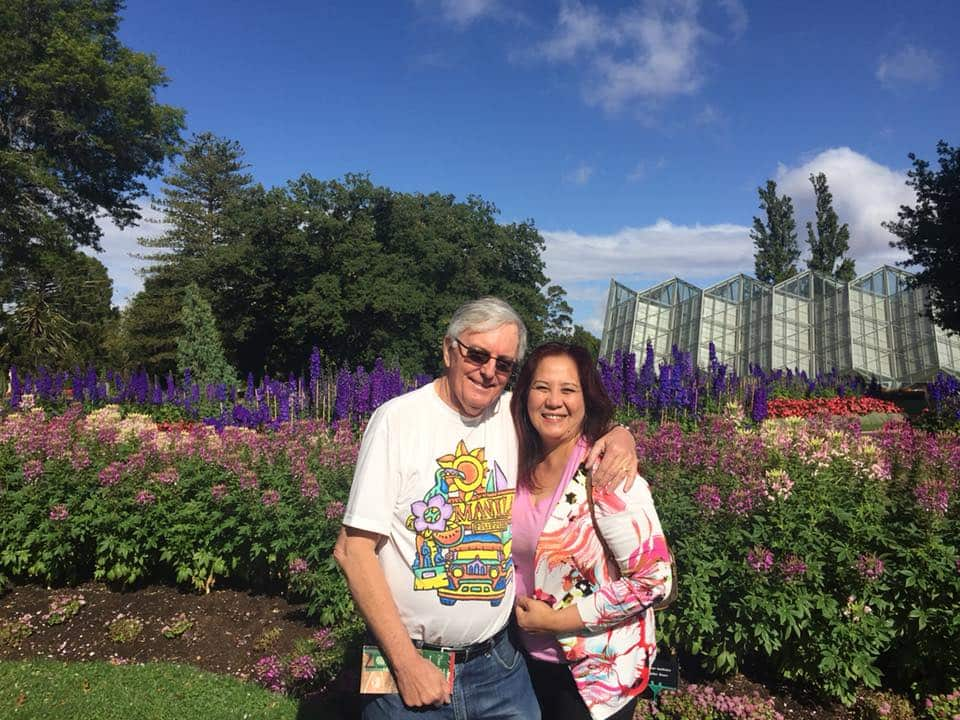
Source: Corazon Hains
Soon enough, Belle discovered the regional town where he brought her, but it took her a while to really settle in.
She shares that because it took her a while to find work, she found herself constantly rearranging their furniture and whipping up so many home-cooked meals that her husband gained 30 kilos during the first 11 months of their marriage.
The constant redecorating and cooking would only serve as a time of transition for Belle because once she found the then-small number of Filipinos in Ballarat, she would serve as a pioneering figure in the community.
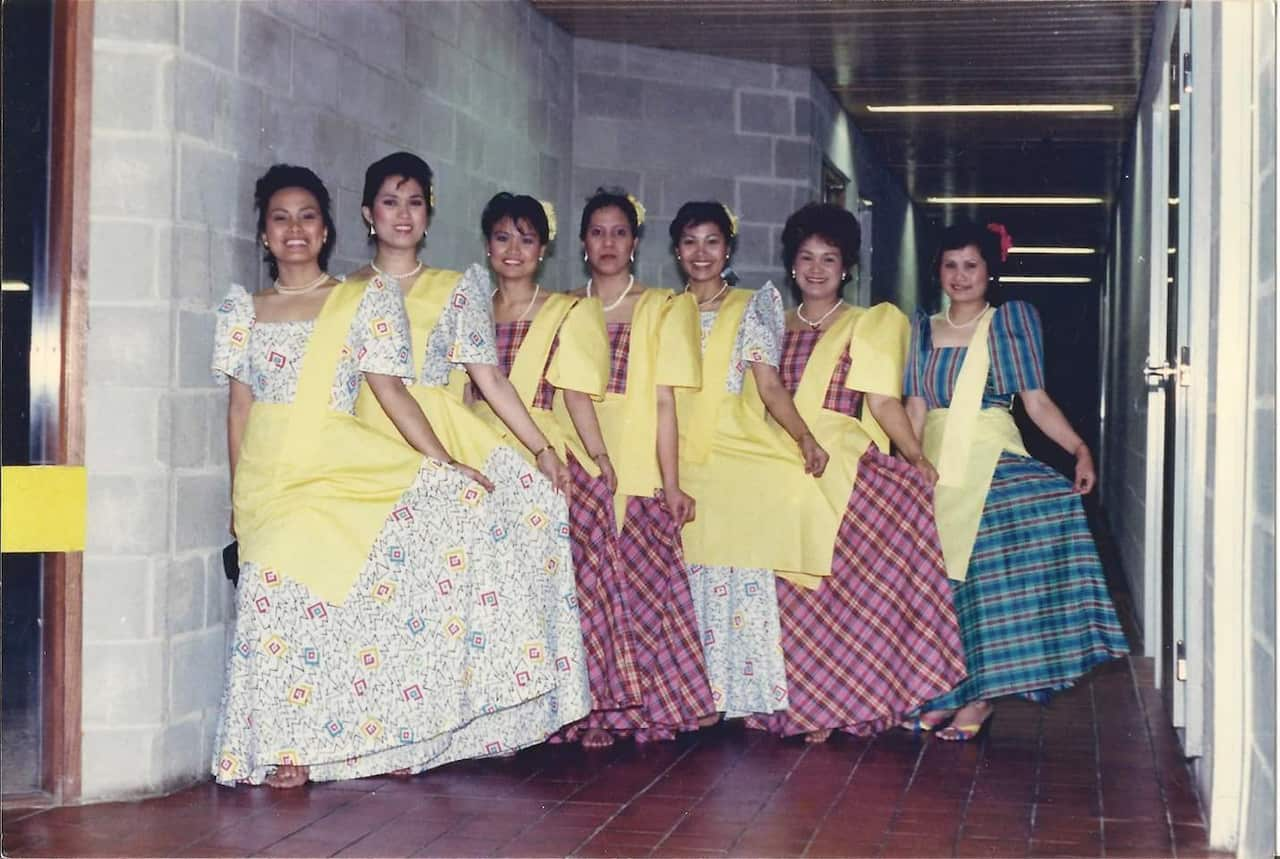
Belle is part of first Filipino dance group in Ballarat Source: Corazon Hains
"We help through friendship. It's a very important one. If someone has a doctor's appointment or needs to go to the shopping centre and he or she can't drive, we help them out. We would cook and eat together. We're like a big family," she shares.
This sense of family has not only made settling into Ballarat easier, but it has also given Belle a reason to stay.
"It's a small community. As I said to my daughter, 'You better be good. I know everyone,'" she laughs, adding, "Not only is the hospital, YMCA and everything else near us, but it's also safe here. I'm never leaving Ballarat."



